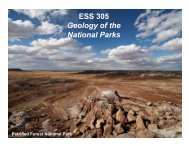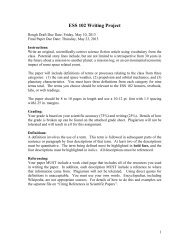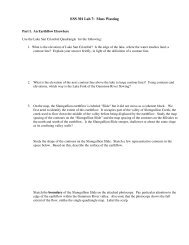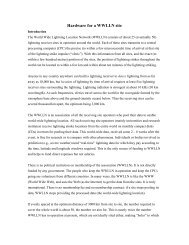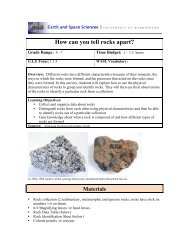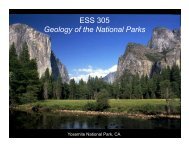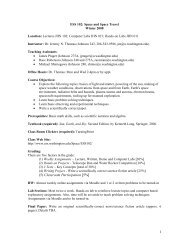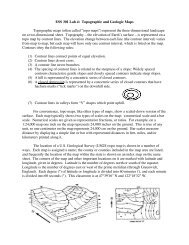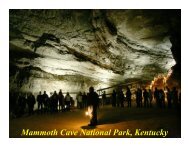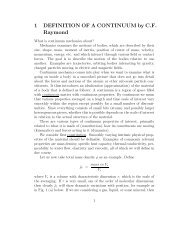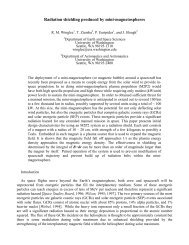Common Rock-Forming Minerals - Earth and Space Sciences
Common Rock-Forming Minerals - Earth and Space Sciences
Common Rock-Forming Minerals - Earth and Space Sciences
You also want an ePaper? Increase the reach of your titles
YUMPU automatically turns print PDFs into web optimized ePapers that Google loves.
Table A-1<br />
Metallic Mineral Identification Chart<br />
Luster Streak Hardness Cleavage Color Specific Other Properties Name<br />
Gravity<br />
6.0-6.5 No brass yellow 5.0 cubic crystals (with striations) common PYRITE<br />
6.0 No<br />
dark gray to<br />
black<br />
5.2 strongly magnetic MAGNETITE<br />
Dark Gray to<br />
Black<br />
3.5-4.0 No golden yellow 4.2 may tarnish to bronze or purple; massive CHALCOPYRITE<br />
Metallic<br />
2.5 Yes silvery gray 7.5 perfect cubic cleavage (3 planes at 90 o ) GALENA<br />
1.0 Yes-d gray to black 2.5 marks paper <strong>and</strong> fingers; greasy feel GRAPHITE<br />
Red to Red-<br />
Brown<br />
5.0-6.5 No<br />
silver to gray to<br />
red<br />
5.0 may be tiny glittering flakes HEMATITE<br />
Yellow-<br />
Brown<br />
3.5-4.0 Yes-d<br />
yellow-brown to<br />
dark brown<br />
4.0<br />
submetallic to resinous luster; 6 cleavage<br />
planes<br />
SPHALERITE<br />
Copper 2.5-3.0 No<br />
copper to dark<br />
brown<br />
8.9 malleable NATIVE COPPER<br />
Note: Yes-d means cleavage is present but may be difficult to see



